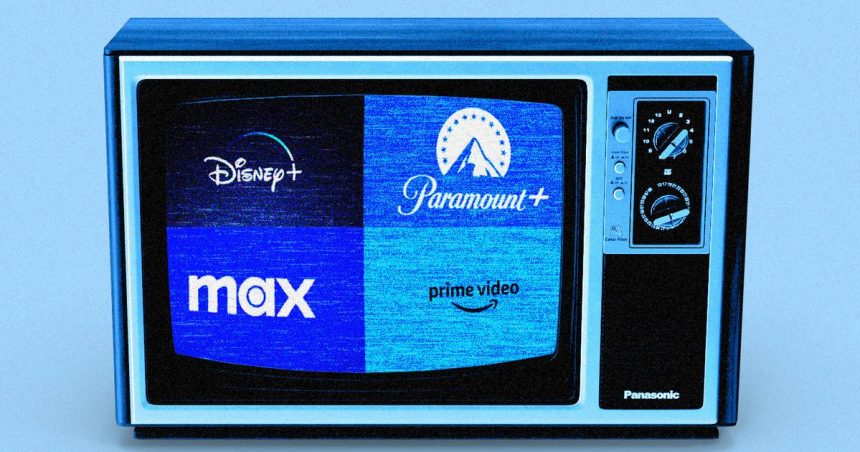Churn rates on streaming services are up, big time.
Since 2019, overall churn rates have nearly tripled, according to the research firm Antenna. In December 2023, 5.5% of premium streaming subscriptions were canceled, up nearly one percentage point from the previous year, Antenna found.
Here’s the potentially good news: Customers who have been subscribed to a service for over a year are less likely to cancel than those who more recently subscribed, Antenna found. Churn that occurs among subscribers in their first year is about twice as high as those in their second year, Rameez Tase, Antenna’s co-founder and president, recently wrote in a LinkedIn post. Of those consumers who do cancel a service, one in three sign up again within six months, Antenna reported.
After focusing for years on growing their user bases, streaming video platforms are now grappling with a more complex subscriber landscape. On recent earnings calls, execs cited a litany of factors that affected their respective streamers’ subscriber growth and retention, including paid sharing, price hikes, live sports, the 2023 actors’ and writers’ strikes, and bundling.
The price is right? Netflix reported “better than forecasted churn,” co-CEO Greg Peters said on the company’s most recent earnings call, which came despite price increases and a password-sharing crackdown, which has included charging users more in order to share accounts outside of their household. However, over at Disney, a subscription price increase contributed to a “temporary uptick in churn” for Disney+, CFO Hugh Johnston told investors.
One and done? A number of streamers debuted NFL programming on their platforms, driving a spike in subscribers; whether or not they stay subscribed to the services is another question. After airing the Super Bowl, Paramount+ was anticipating the possibility of “high churn,” Naveen Chopra, Paramount’s CFO, said on the company’s earnings call. Peacock, which exclusively aired an NFL playoff game in January, expected to see an influx of paid subs as a result, and is now focused on retaining them, Comcast’s president, Michael Cavanagh, told investors.
Commitment issues: Despite the smaller trends affecting churn that streamers grappled with to different degrees this past quarter, another, larger trend will affect them all, Antenna predicted: the serial churner.
Get marketing news you’ll actually want to read
Marketing Brew informs marketing pros of the latest on brand strategy, social media, and ad tech via our weekday newsletter, virtual events, marketing conferences, and digital guides.
Serial churners, aka those who have canceled three or more premium SVOD service subscriptions in the past two years, account for 23% of consumers, according to Antenna, but make up 38% of gross additions to streamers and 40% of canceled subscriptions.
“Serial churners are a growing, active, and markedly different cohort,” the report said.
To contend with serial churners, media companies may want to differentiate between loyal and casual users, Tase advised. “For example, rather than Disney reporting ~150 million global subscribers across their services, they may report that 25% of those 150 million are loyals with virtually no churn, while 75% are casuals—and their plan is to maintain the number of total subscribers while 10x’ing the ARPU of the 25% loyals,” he wrote.
Strike out: The effects of the writers’ and actors’ strikes continue to be felt in the streaming world. At Max, a domestic subscriber decline was driven by a “partly strike-driven lack of fresh tentpole content,” Gunnar Wiedenfels, Warner Bros. Discovery’s CFO, told investors. Paramount’s Chopra said subscriber growth was also affected by the production pauses.
Back to the drawing board: Streamer execs’ mantra? Bundling as much as they can. Several streamers are leaning on bundling as a way to potentially drive new subscriber growth and limit churn.
Paramount is leaning into the strategy as it’s “one of the tried-and-true methods of value creation in media,” Bob Bakish, Paramount’s president and CEO, said on the company’s most recent earnings call. It certainly may be tried and true at Disney, where bundled products tend to see lower churn than its standalone offerings, Disney’s Johnson said.
Expect to see more bundled options in the future. For Netflix, which has a bundled offering with T-Mobile where T-Mobile customers get free access to Netflix’s ad-supported tier, bundling will continue to be part of its strategy going forward, Peters told investors. Meanwhile, Paramount, Disney, and Warner Bros. Discovery are working together on a bundled sports offering set to debut later this year.
Read the full article here










